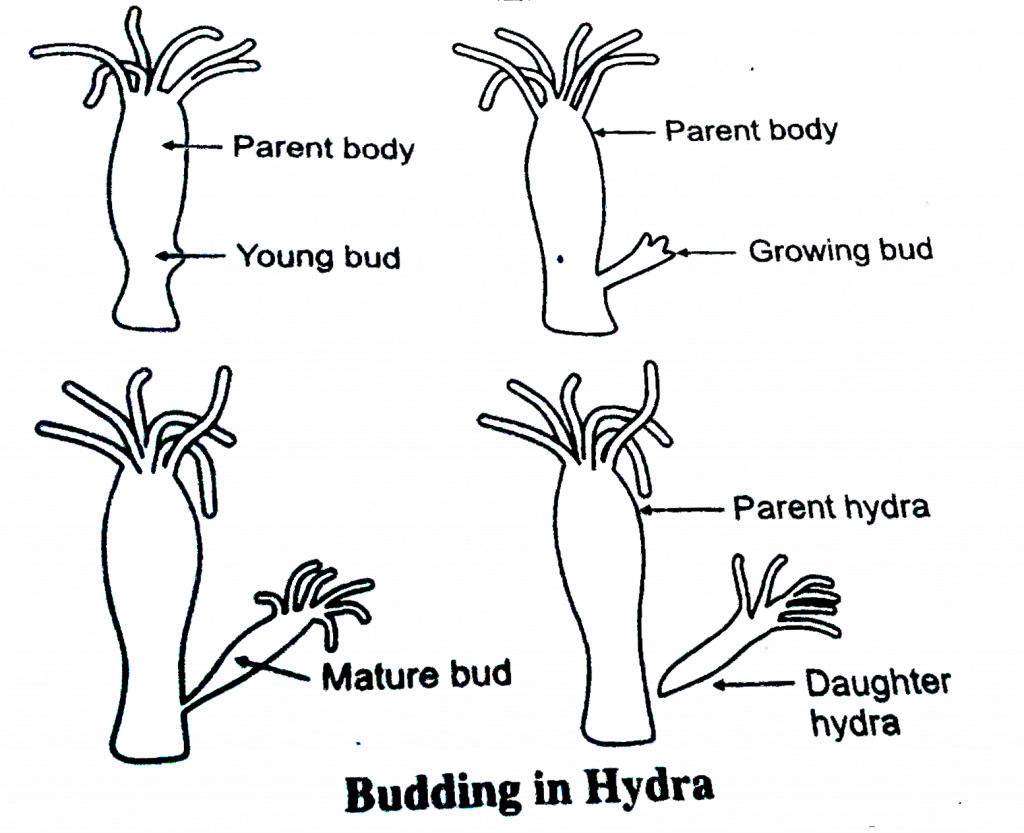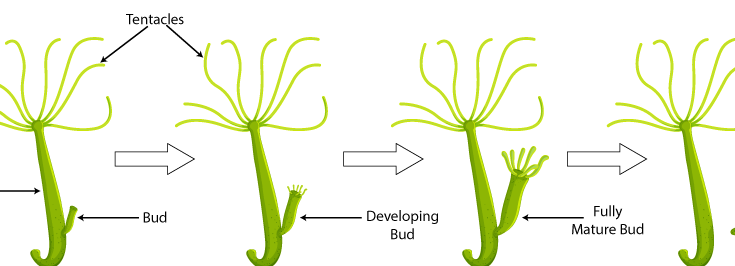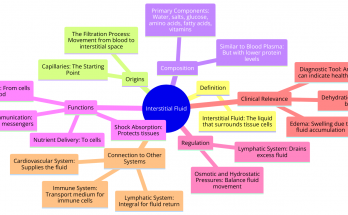What Is Budding ?
Definition
Budding is a type of asexual reproduction .In this process a new organism is formed from an outgrowth or bud due to cell division at one particular site on the parent organism.
- When a parent’s cell divides, one of its nuclei moves into the outgrowth.
- This bud grows to become a fully matured organism and eventually detaches from the parent body to become a new organism.
- Budding occurs in both unicellular and multicellular organisms.
- In Budding, a single daughter organism is formed.
Examples of Budding –
Budding occurs in a variety of organisms, including bacteria, fungi, and invertebrates such as corals and hydras. In some organisms, such as yeast, the bud may break off and become a separate, independent organism. In others, such as corals, the bud may remain attached to the parent organism and continue to grow and develop.
Example 1 – Budding in Yeast
- The yeast cell begins to grow and reproduce by a process called budding.
- As the cell grows, a small bulge called a bud begins to form on the surface of the cell.
- This is followed by the division of the nucleus
- The nucleus of the parent cell divides into two and one of the daughter nuclei migrates into the body the bud
- As the bud grows larger, a small protrusion called the bud neck forms between the bud and the parent cell.
- The cell membrane and cell wall begin to separate at the bud neck, creating a small gap.
- The cytoplasm of the parent cell begins to flow into the bud, providing the necessary nutrients for the new cell to grow and develop.
- The parent cell continues to divide and the bud eventually breaks off, forming a new, independent yeast cell.
- A daughter cell matures into a new yeast cell
- The daughter cell produced during the budding process is generally smaller than the mother cell.
- The process repeats as the new cell begins to grow and form its own buds, continuing the cycle of reproduction.

Also Check – 7 Important Differences between Binary Fission and Multiple Fission
Budding in hydra
- Hydra reproduces asexually through budding when conditions are favorable, such as an adequate food supply and water temperature.
- A small bulge, known as the bud, forms on the body wall of the Hydra.
- The bud then begins to grow and differentiate, forming the various body parts such as tentacles, body column, and mouth.
- The nucleus of the parent cell divides into two and one of the daughter nuclei migrates into the body of the bud .
- As the bud continues to grow, it becomes more distinct and separate from the parent Hydra.
- Once the bud reaches a certain size, it begins to detach from the parent Hydra.
- The bud then separates from the parent Hydra and becomes a fully functional, independent organism.
- The daughter cell produced during the budding process is generally smaller than the mother cell.
- This process of budding can occur multiple times in a single Hydra, leading to the formation of multiple offspring simultaneously.
- The newly formed Hydra will then continue to grow and reproduce through budding, leading to the formation of a colony of Hydra.
Also Check – How do Organisms Reproduce Class 10 -Notes

Also Check –9 Important Differences between Sexual and Asexual Reproduction
Also Check – Vegetative Propagation

